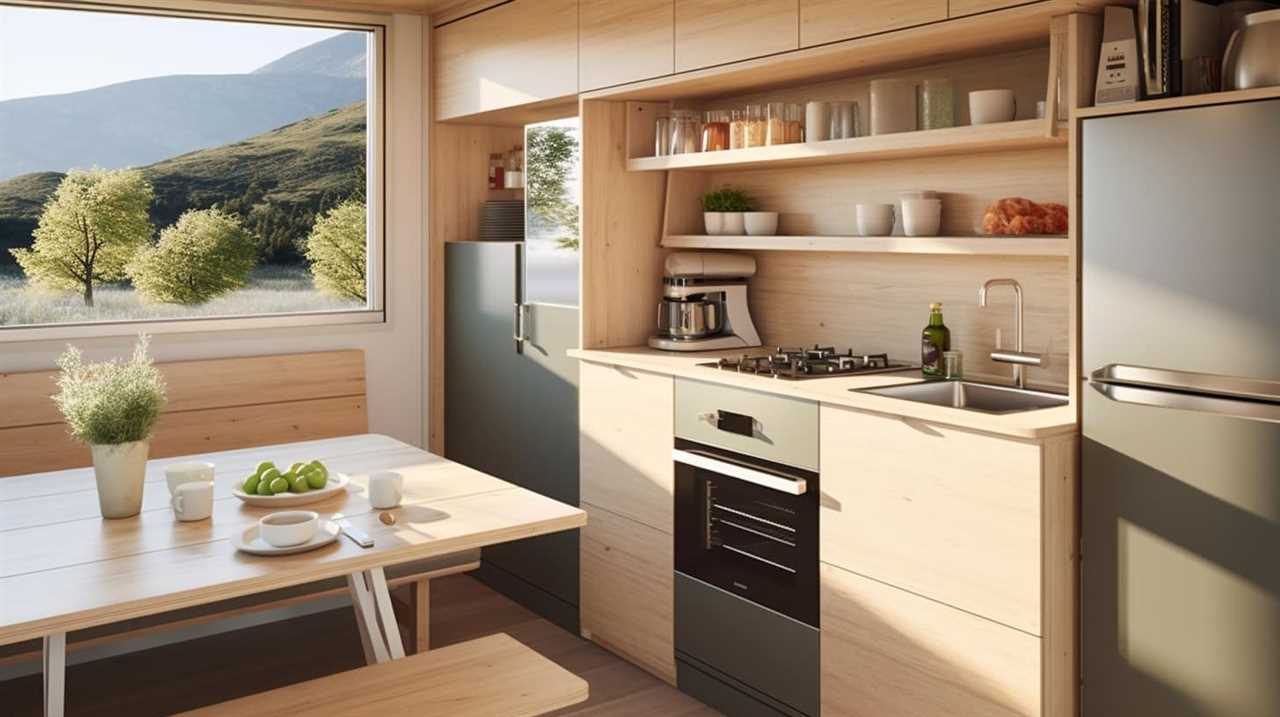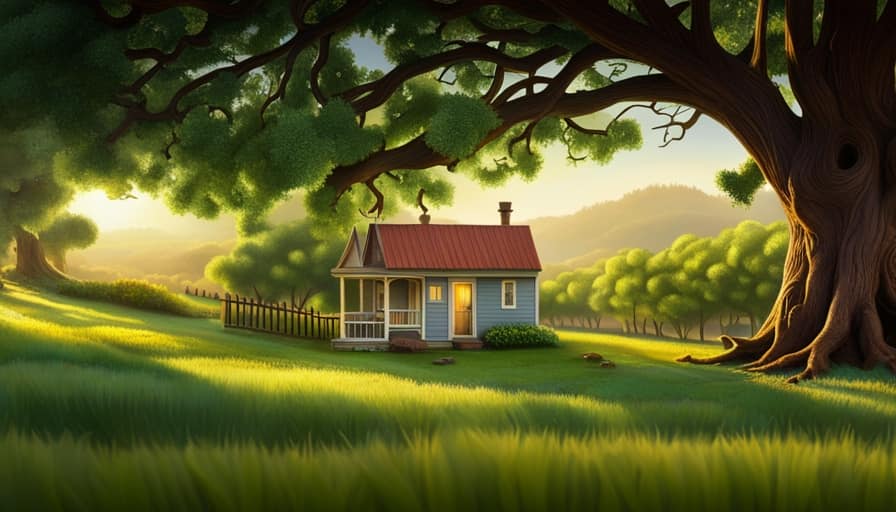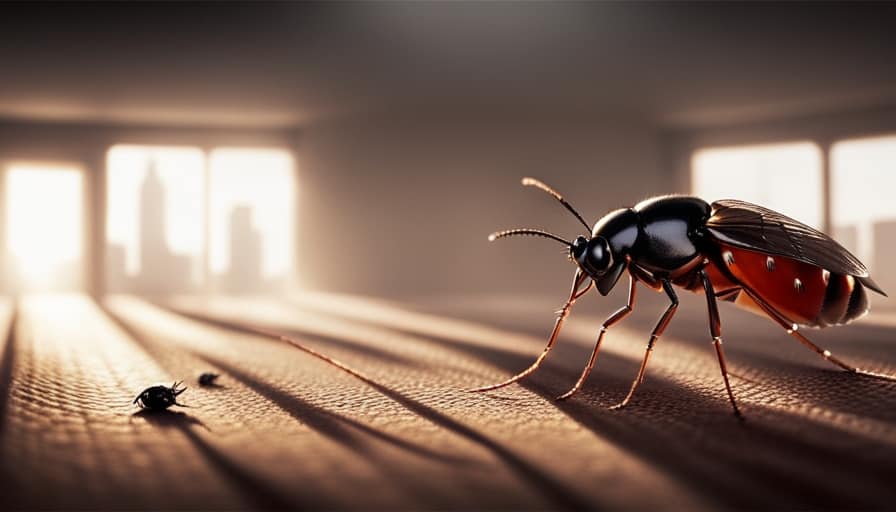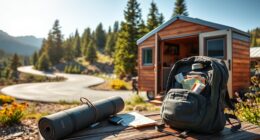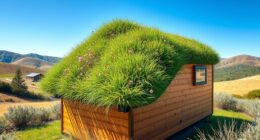Hello, fellow fans of tiny homes! Have you ever imagined creating your own comfortable, environmentally friendly retreat? Well, you’re in luck because we have everything you need in our DIY guide for building your very own tiny house.
In this article, we’ll walk you through eight essential steps, from laying the foundations to exploring off-grid options. So grab your tools and let’s embark on this exciting journey together.
Trust us, by the end, you’ll be ready to settle into your dream tiny house!
Key Takeaways
- Comprehensive planning is crucial for a successful DIY tiny house project, including creating a checklist, determining a budget, selecting a location, obtaining permits, and creating a timeline.
- Proper site preparation and foundation work are necessary for a stable and functional tiny house, including clearing the site, leveling the ground, installing footings, choosing a suitable foundation type, and ensuring structural integrity.
- Framing and structural components should be built using lightweight and durable materials, following advanced framing techniques and structural engineering principles.
- Insulation and weatherproofing are essential for comfort and energy efficiency in a tiny house, including choosing insulation options, applying weatherstripping, installing vapor barriers, using rigid foam board, and selecting suitable siding materials.
Planning and Design
In our journey to DIY our tiny house building, we start by laying out the essential steps for planning and designing.
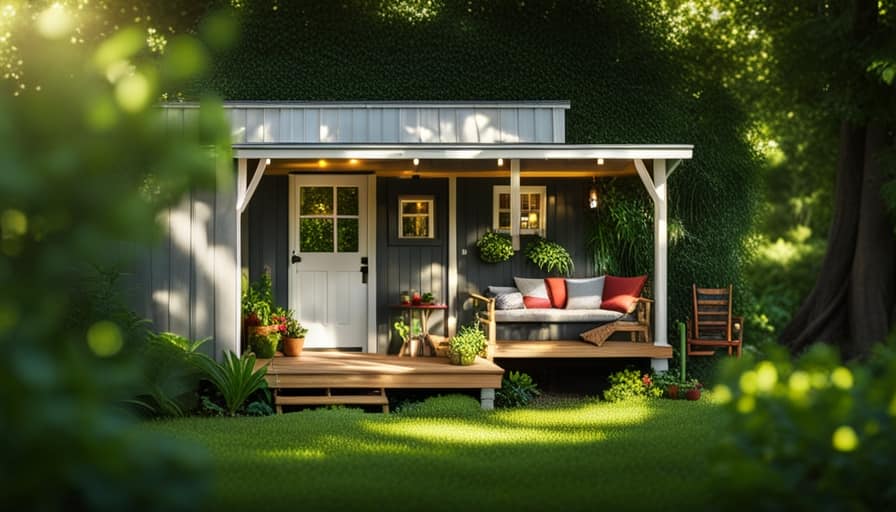
A comprehensive planning checklist is crucial to ensure a smooth and successful project. It includes determining your budget, selecting the right location, obtaining necessary permits, and creating a timeline.
Additionally, researching design inspiration is vital to create a space that reflects your personal style and meets your needs. Explore different architectural styles, interior layouts, and innovative storage solutions to maximize your space. Consider factors such as energy efficiency, sustainability, and functionality when making design decisions.
By carefully planning and drawing inspiration, you can create a unique and functional tiny house that perfectly suits your lifestyle.
Now, let’s move on to the next step: site preparation and foundation.
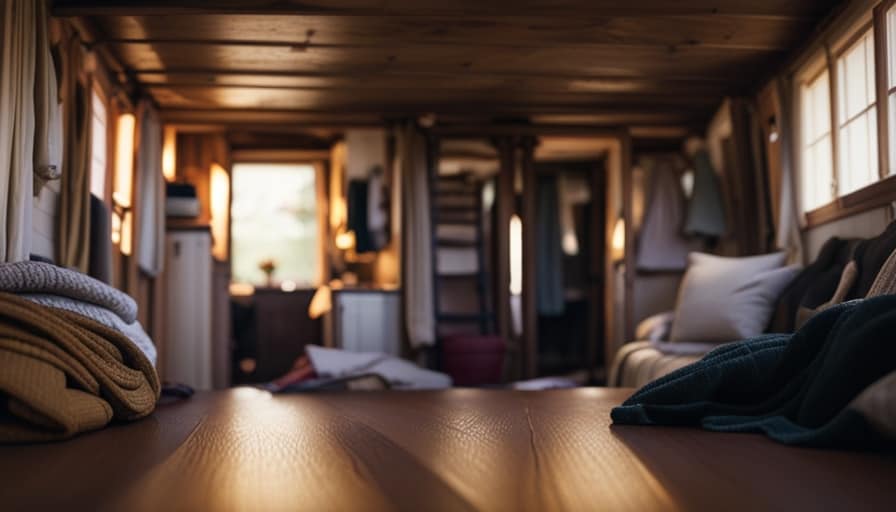
Site Preparation and Foundation
Our first step in preparing the site and laying the foundation for our DIY tiny house is to clear any debris and level the ground. This is crucial to ensure a stable and secure foundation for our future home. Here are the essential steps we need to follow:
-
Clearing the site:
-
Remove any rocks, trees, or vegetation that may hinder the construction process.
-
Dispose of any debris properly to maintain a clean and organized work area.
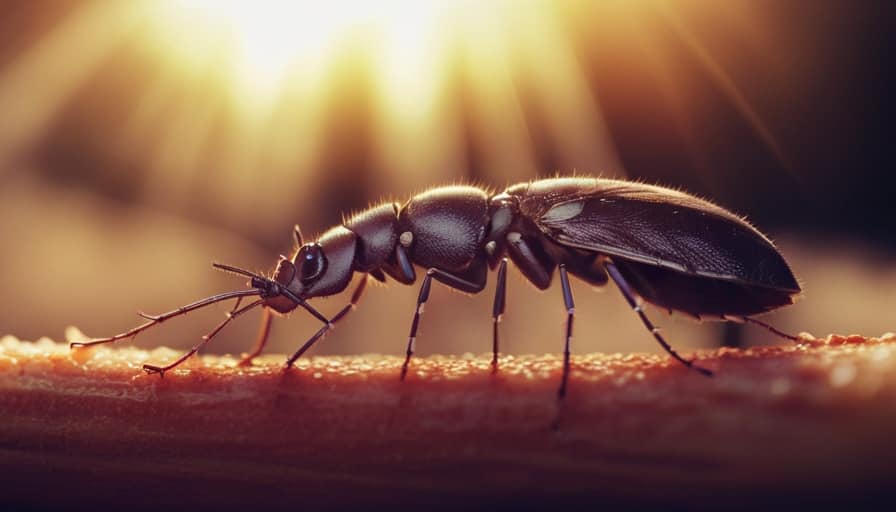
-
Leveling the ground:
-
Use a surveying tool, such as a laser level, to determine the highest and lowest points of the site.
-
Excavate or fill the ground as necessary to achieve a level surface, ensuring proper drainage.
Framing and Structural Components
First, we will gather the necessary materials and tools, and then we will start framing the structural components of our tiny house. Framing techniques and structural engineering are crucial in ensuring the stability and durability of the building. We will use advanced framing techniques to maximize the use of materials and minimize waste. This technique involves using fewer studs and headers, creating stronger and more efficient structures. Structural engineering principles will guide us in determining the load-bearing capacity of our walls, floors, and roof. By understanding these principles, we can design a safe and sturdy tiny house that will withstand the test of time. Our table below provides a visual representation of the key components involved in framing and structural engineering.
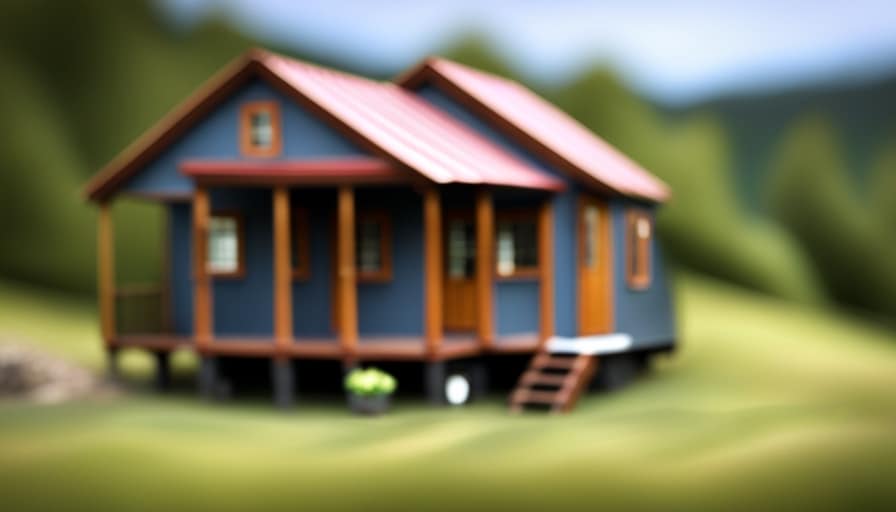
| Component | Purpose | Materials Used |
|---|---|---|
| Studs | Vertical supports for walls | Wood, metal |
| Headers | Horizontal supports for openings | Wood, metal |
| Joists | Horizontal supports for floors | Wood, engineered lumber |
Insulation and Weatherproofing
To ensure optimal energy efficiency and protection from the elements, we’ll take four essential steps for insulation and weatherproofing our tiny house. These steps will help create a comfortable and sustainable living space.
-
Insulation options:
-
Spray foam insulation: This provides a seamless and airtight barrier, minimizing heat loss and reducing energy consumption.
-
Fiberglass insulation: This widely available and cost-effective option is an excellent choice for DIY builders.
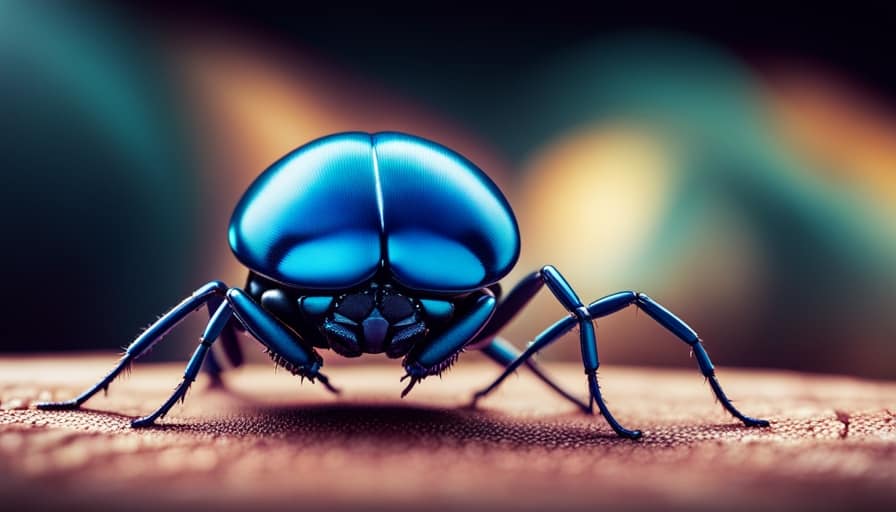
-
Weatherproofing techniques:
-
Use weatherstripping: Applying weatherstripping to doors and windows prevents drafts and improves energy efficiency.
-
Install a vapor barrier: This helps prevent moisture buildup and protects against mold and mildew.
Electrical and Plumbing Installations
Let’s tackle the electrical and plumbing installations to ensure a functional and efficient tiny house living space. When it comes to electrical safety, it is crucial to follow proper installation guidelines and consult with a professional electrician. Plan the electrical layout carefully, considering your power needs and the location of outlets and switches. Use quality materials and conduct regular maintenance to prevent any potential hazards. As for plumbing maintenance, it is essential to understand the basics of plumbing systems and how to troubleshoot common issues. A well-designed plumbing system will ensure reliable water supply and efficient wastewater disposal. Regularly inspect and maintain your plumbing fixtures and pipes to prevent leaks and other problems. Here’s a table to help you visualize the electrical and plumbing installations:
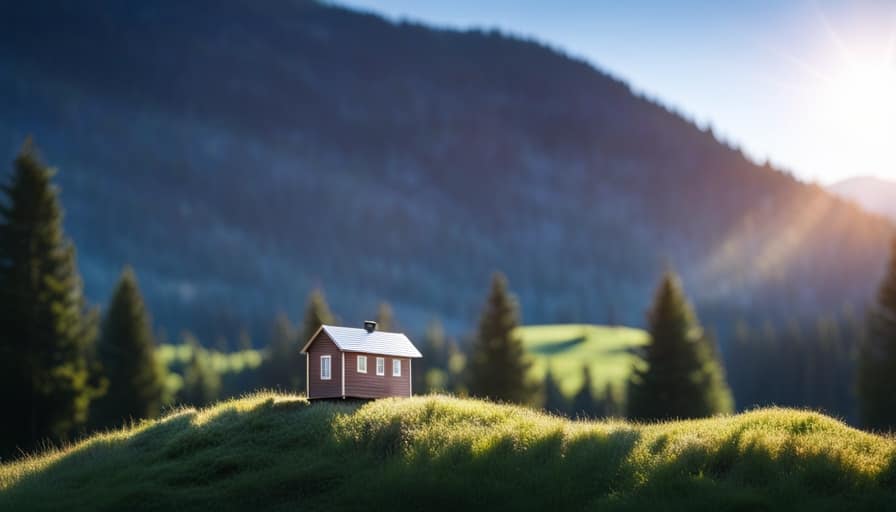
| Electrical Installations | Plumbing Installations |
|---|---|
| Proper wiring and grounding | Installation of pipes and fixtures |
| Installation of outlets and switches | Connection to water supply and sewer system |
| Use of quality materials | Regular inspection and maintenance |
| Consultation with a professional electrician | Understanding of plumbing system basics |
Interior Finishes and Customization
We can now focus on selecting and installing our desired interior finishes and customizing our tiny house to create a personalized and inviting living space.
When it comes to customization ideas, the possibilities are endless. Here are a few options to consider:
-
Flooring: Choose from a variety of materials such as hardwood, laminate, or vinyl. Opt for warm tones like oak or maple to create a cozy atmosphere.
-
Walls: Experiment with different interior color schemes to reflect your personal style. Consider using neutral colors for a timeless look or go bold with vibrant hues for a pop of personality.
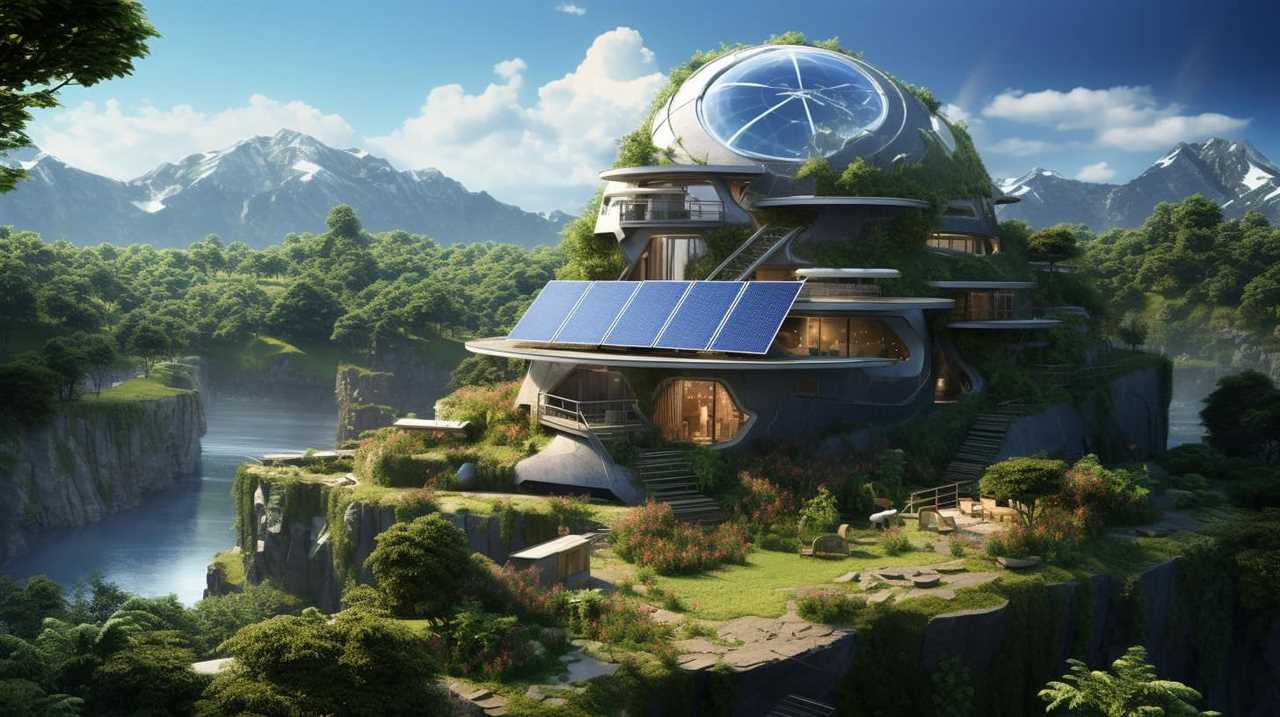
-
Accent Walls: Create visual interest by adding an accent wall using wallpaper, reclaimed wood, or decorative tiles.
Off-Grid Systems and Sustainable Energy Options
When it comes to off-grid systems and sustainable energy options for your tiny house, there are several key points to consider.
First, solar power is a popular choice for generating electricity, allowing you to harness the sun’s energy and reduce your reliance on the grid.
Additionally, wind turbines can be a viable alternative, especially in areas with consistent wind patterns.
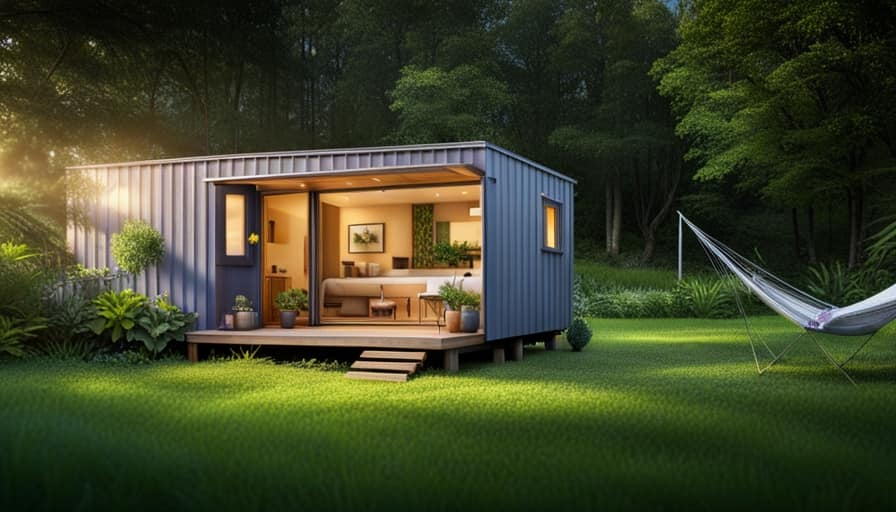
Finally, water harvesting and filtration systems can help you become more self-sufficient by collecting and purifying rainwater for everyday use.
These options provide a sustainable and eco-friendly approach to powering your tiny house.
Solar Power for Off-Grid
The solar power system is an essential component for off-grid living in our tiny house, providing sustainable energy options. Installing solar panels allows us to harness the power of the sun and generate our own electricity, reducing our reliance on traditional energy sources.
Here are two key benefits of solar power installation for off-grid energy solutions:

-
Energy independence: By using solar power, we can break free from the grid and become self-sufficient. We no longer have to worry about power outages or rising energy costs. Our tiny house can operate completely off-grid, giving us the freedom to live in remote locations or in areas with limited access to electricity.
-
Environmental sustainability: Solar power is a clean and renewable energy source that produces zero emissions. By opting for solar energy, we reduce our carbon footprint and contribute to a healthier planet. We’re able to enjoy the comforts of modern living while minimizing our impact on the environment.
Wind Turbines as Alternative
How can wind turbines be used as alternative off-grid systems and sustainable energy options for our tiny house? Wind turbines are an excellent choice for harnessing renewable energy and powering your tiny house. With their high efficiency and low maintenance requirements, wind turbines can provide a consistent and reliable source of electricity. When considering wind turbine installation for your tiny house, it’s important to assess the wind potential in your area and choose the right turbine size accordingly. Additionally, proper placement and orientation of the turbine are crucial for maximizing energy production. By incorporating a wind turbine into your off-grid system, you can reduce your reliance on traditional power sources and contribute to a more sustainable lifestyle. Now, let’s move on to discussing water harvesting and filtration for your tiny house.
| Advantages | Disadvantages | Considerations |
|---|---|---|
| Renewable energy source | Noise pollution | Assess wind potential |
| Low maintenance | Visual impact | Choose right turbine size |
| Consistent power generation | Bird and bat collisions | Proper placement and orientation |
Water Harvesting and Filtration
We can incorporate water harvesting and filtration systems into our off-grid setup to ensure a sustainable and self-sufficient water supply for our tiny house. By implementing rainwater collection, we can capture and store water from the roof, diverting it into a storage tank for later use. This allows us to take advantage of natural resources and reduce our reliance on traditional water sources.
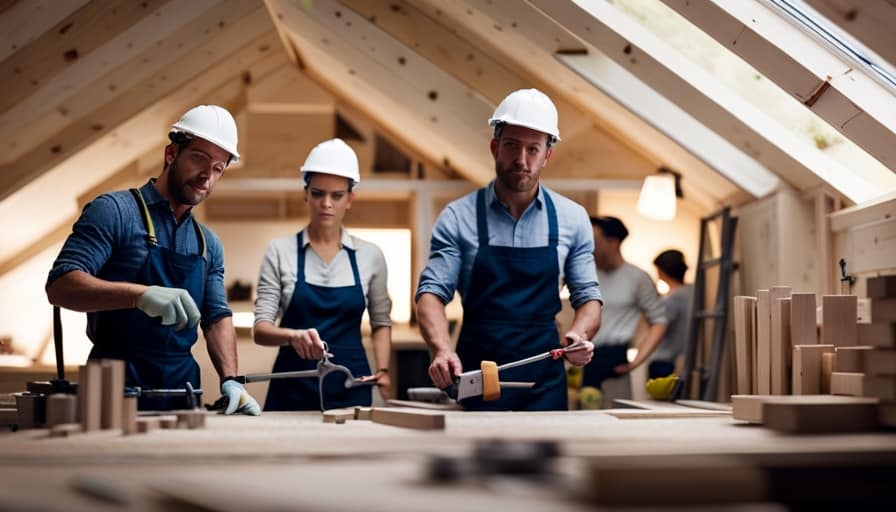
Additionally, we can integrate water purification systems to ensure the water we collect is clean and safe to use. These systems can remove contaminants and impurities, providing us with a reliable source of potable water.
By combining rainwater collection and water purification, we can create a sustainable and eco-friendly water supply for our tiny house.
Now that we’ve addressed water harvesting and filtration, let’s move on to the final touches and prepare for move-in day.
Final Touches and Move-In Day
Now that your DIY tiny house is nearing completion, it’s time to focus on the final touches and move-in day.

Decorating your new space is an exciting opportunity to express your personal style and make it feel like home.
We’ll also explore organizing tips for small living spaces, helping you maximize your storage and create functional areas within your tiny house.
Additionally, we’ll discuss the important step of securing utilities and services, ensuring that you have all the necessary resources to live comfortably in your new home.
Decorating Tips for Move-In
Before we start decorating our tiny house, we need to gather all the necessary supplies. Here are some decorating ideas and space-saving furniture options to consider:
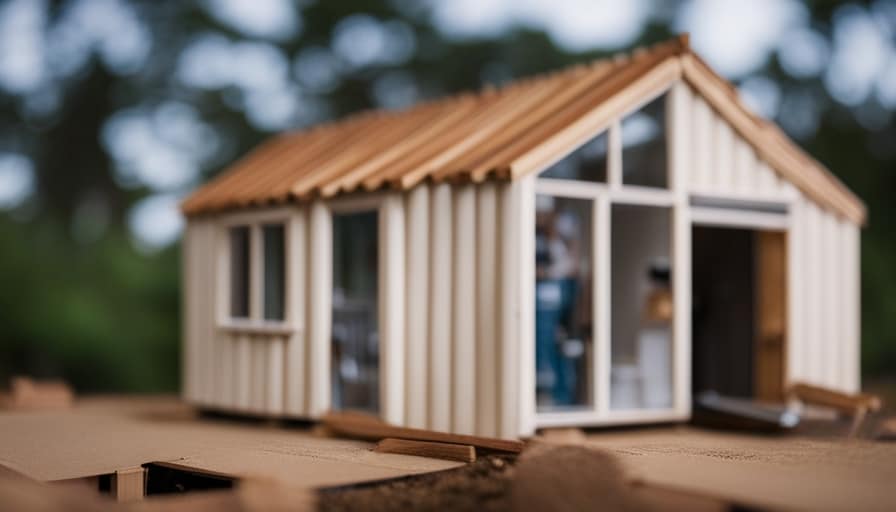
-
Decorating Ideas
-
Use light and neutral colors to make the space feel larger and brighter.
-
Incorporate mirrors to create the illusion of more space.
-
Hang curtains higher and wider to give the illusion of taller ceilings and wider windows.
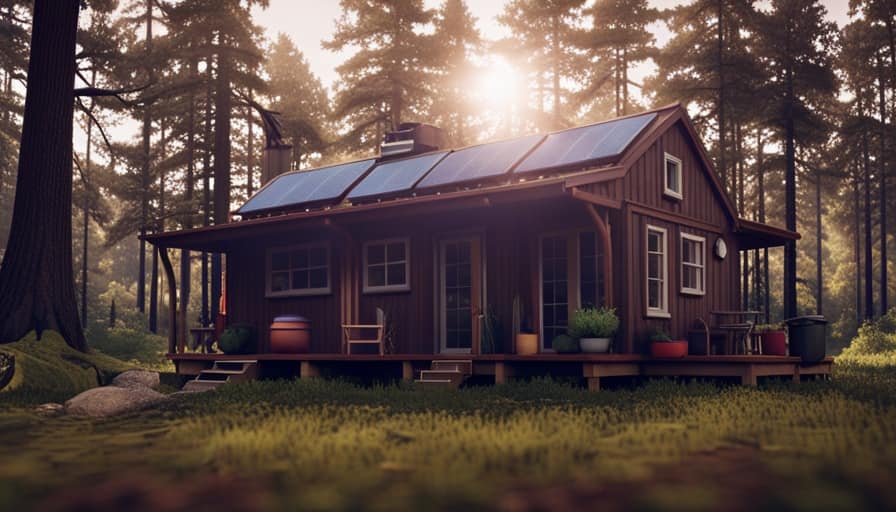
-
Space-Saving Furniture
-
Opt for multi-functional furniture, such as a sofa that can be converted into a bed.
-
Consider foldable tables and chairs that can be easily stored when not in use.
By implementing these decorating ideas and incorporating space-saving furniture, you can maximize the functionality and aesthetics of your tiny house.

Now, let’s move on to the next section and explore organizing small living spaces.
Organizing Small Living Spaces
After unpacking and organizing our belongings, we can finally add the final touches to our small living space and make it feel like home.
When it comes to organizing small living spaces, storage solutions are key. Maximizing space is essential in order to create a functional and comfortable environment.
One effective storage solution is to utilize vertical space by installing shelves or hanging organizers on walls. This helps to keep items off the floor and creates more room to move around.

Another option is to invest in multi-purpose furniture, such as ottomans or coffee tables with built-in storage compartments. These furniture pieces not only provide extra storage space but also serve as functional pieces in the room.
Additionally, using storage bins and baskets can help keep items organized and easily accessible.
Securing Utilities and Services
We need to ensure that we’ve secured all necessary utilities and services before we can complete the final touches and move into our tiny house. This means taking the necessary security measures to protect our home and ensuring we’ve access to the essential services we need for a comfortable living experience.
Here are some key steps to consider:
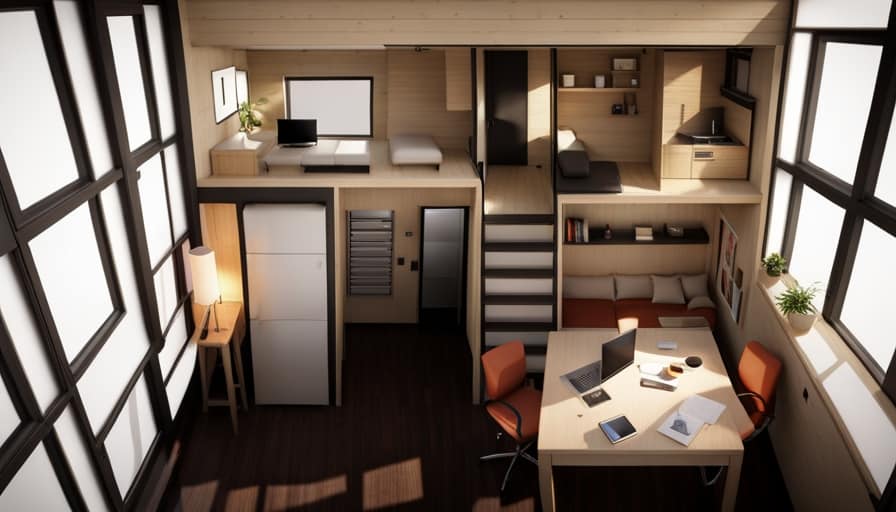
-
Utilities:
-
Water: Install a water tank and filtration system to ensure a clean and reliable water supply.
-
Electricity: Connect to the grid or consider alternative options such as solar panels or wind turbines for off-grid power.
-
Services:
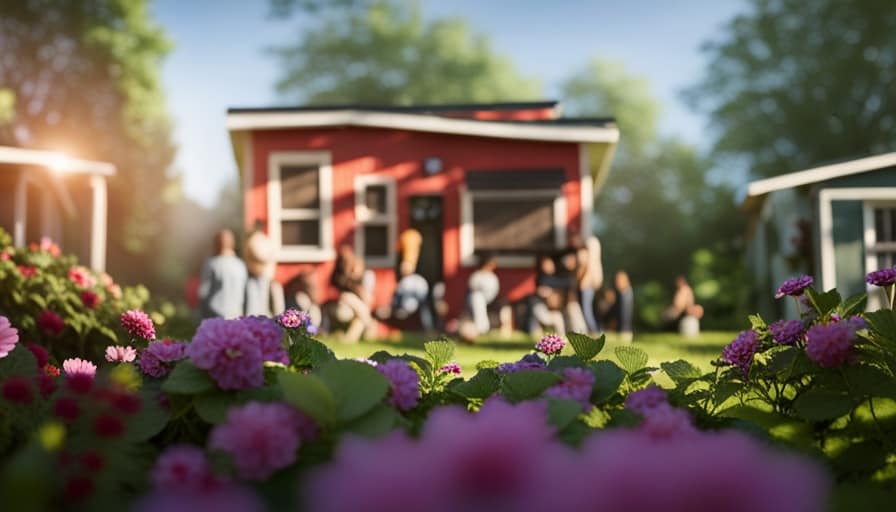
-
Heating: Explore off-grid heating options like wood-burning stoves or propane heaters to keep your tiny house warm during colder months.
-
Waste Management: Set up a composting toilet system or connect to a local sewage system, depending on your location.
Frequently Asked Questions
How Much Does It Cost to Build a Tiny House?
The cost to build a tiny house depends on factors such as size, materials, and location. A cost breakdown and financing options can help determine the total expenses involved in the project.
Can I Build a Tiny House on Any Type of Land?
Yes, you can build a tiny house on any type of land, but it’s important to consider zoning restrictions and land suitability. We’ll guide you through the process with professional expertise and attention to detail.
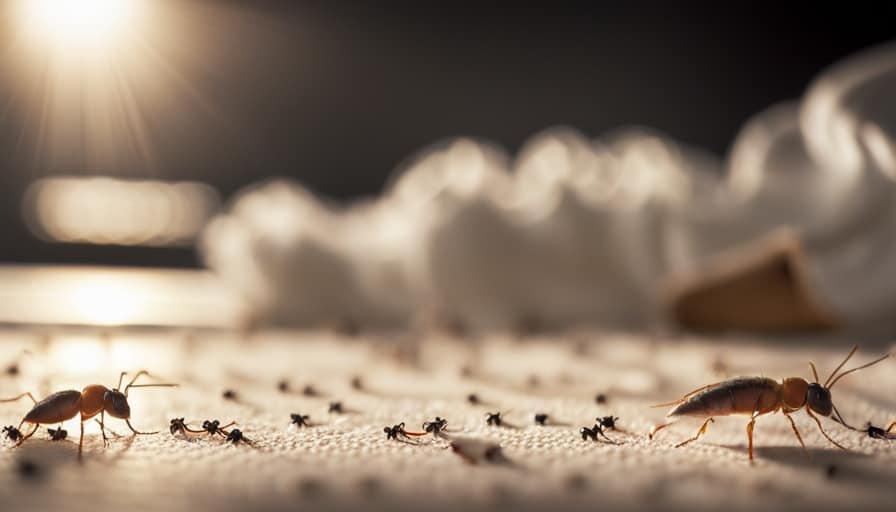
Is It Possible to Build a Tiny House Without Any Prior Construction Experience?
Yes, it is possible to build a tiny house without any prior construction experience. However, there will be DIY challenges and a learning curve involved. With the right resources and guidance, we can overcome these obstacles and successfully complete the project.
Can I Legally Live in a Tiny House Full-Time?
Yes, we can legally live in a tiny house full-time, but there are legal restrictions and zoning regulations to consider. It’s important to research and comply with local laws to ensure a smooth and legal living experience.
What Are the Common Challenges or Setbacks People Face When Building a Tiny House?
When building a tiny house, common challenges and setbacks can include high costs, finding suitable land, lack of prior construction experience, and ensuring it is legally able to be lived in full time.
Conclusion
In conclusion, DIY-ing your tiny house building can be a rewarding and sustainable endeavor. By following the 8 essential steps outlined in this article, you can create a personalized and energy-efficient home that suits your needs.
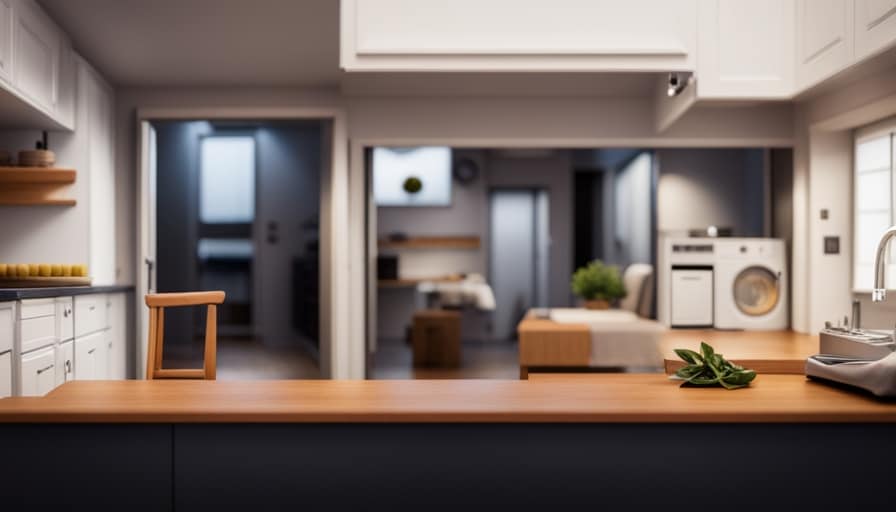
So, grab your tools and get started on this exciting journey towards living off-grid and embracing a simpler way of life.
Remember, Rome wasn’t built in a day, but with determination and a little elbow grease, your dream tiny house can become a reality.
I’m Theodore, and I love tiny houses. In fact, I’m the author of Tiny House 43, a book about tiny houses that are also tree houses. I think they’re magical places where imaginations can run wild and adventures are just waiting to happen.
While tree houses are often associated with childhood, they can be the perfect adult retreat. They offer a cozy space to relax and unwind, surrounded by nature. And since they’re typically built on stilts or raised platforms, they offer stunning views that traditional homes simply can’t match.
If you’re looking for a unique and romantic getaway, a tree house tiny house might just be the perfect option.
